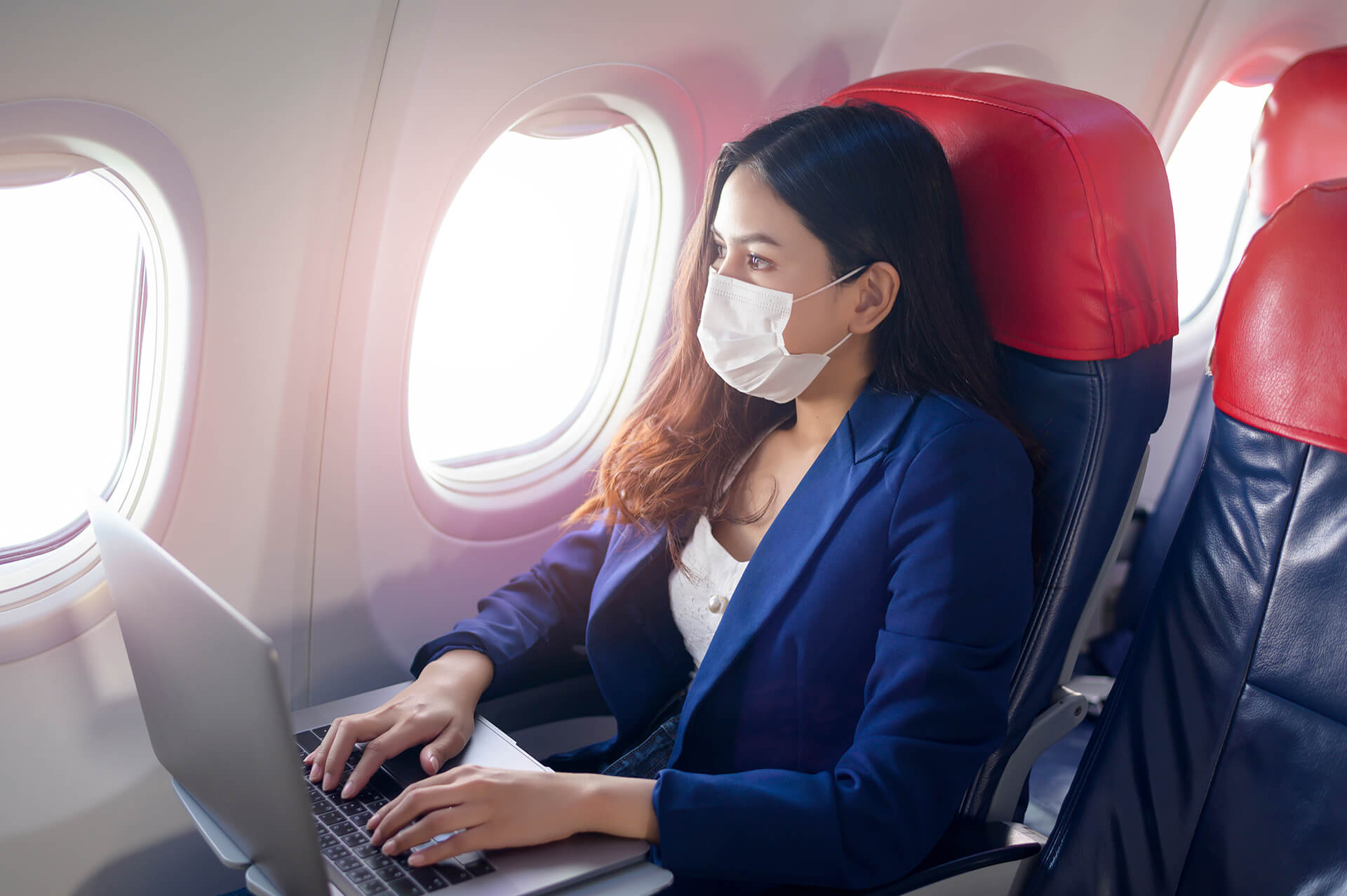How Air Travel has Changed and How You Can Be Best Prepared For Your Next Flight
How Air Travel has Changed and How You Can Be Best Prepared For Your Next Flight
During the pandemic, the entire travel industry was decimated. Corporate travel, in particular, has come to a complete standstill. After nearly 18 months of lockdowns, travel restrictions, and protocols, travel has been slowly coming back into the fold. Now that vaccination rates have increased in the United States, Americans are looking to get back to travel.

How Air Travel has Changed Due to COVID-19
- Lowest Number of Air Travelers in the Past 10 Years
Early in the pandemic, air travel was down 96 percent. However, it seems that air travel is picking up. Airlines and TSA are both struggling to meet demand after more than a year of layoffs and limited flights.
- Masks Required on All Flights
This is expected to continue into the foreseeable future, as the Transportation Security Administration extended its mask mandate through Sept. 13
- Middle Seat Blocking
This is now beginning to fade out as a way to maintain social distancing on flights. As of January 2021, Delta Airlines is the only airline that will continue to block middle seats.
- Flexible Tickets
There is more flexibility with flight change fees. Due to ever-changing travel bans, the airlines realized booking became difficult. Many airlines have waived change fees for a period of time and some have canceled them indefinitely.
- Fewer Flights and Routes
The supply cannot keep up with the travel demand. This means fewer capacity limits on planes, which, unfortunately, could mean higher prices.
- Better Airline Communication
The airlines have eventually stepped up and increased the level of proactive service and communication. This is key to maintaining social distancing and to prevent communication mix-ups from garbled speech due to mask-wearing.
- Scaled Back or Eliminated Meal Service
To reduce interactions between passengers and crews, inflight dining has been scaled back or eliminated on flights. The future of the in-flight meal at this point is uncertain.
- Touchless Technology
Expect to see even more touchless technology in airports in the future. Touchless kiosks are currently being tested that can monitor passenger health and do biometric check-in with face recognition, in addition to checking them in their flights.
- Digital Health Passports
These mobile applications enable passengers to upload proof of vaccinations and COVID-19 test results. This is important, as different countries require different documentation to enter their ports.
- Cleaner Planes
The airlines have had to step up their cleaning and sanitation procedures. Many experts say this will be the new standard for air travel.
- Different Boarding Procedures
To reduce the amount of close passenger contact, airlines have adopted back-to-front boarding. This appears to be the safest method for plane boarding post-COVID.
How to Prepare For Your Next Flight
The following is a list of travel tips to help prepare you for that post-COVID flight.
Destination Choice
For the foreseeable future, the best bet for successful travel booking is to research your destination. View government and tourist bureau websites, and research all the current travel mandates and restrictions. Make sure you know all the information and protocols for social distancing, openings/reopenings, and more.
When it comes to international travel, it is especially important to make sure you do your research on travel guidelines and restrictions. Some countries require vaccinations, negative tests, and mandatory quarantines to enter the country. For example, in Peru, you must wear a plastic face shield in crowded spaces, such as an airport.
Advanced Reservations
Advanced reservations for attractions will become a new travel mainstay. New capacity limits have been set for attractions and theme parks. Jump online and make your reservations as soon as possible, as walk-in entries have become a thing of the past.
Book Your Flights As Early As Possible
Since there are currently fewer flights and routes, to avoid disappointment, book your flights as early as you can. Be flexible with your plans while booking. Before paying the fare, be sure to review the cancellation policies very carefully. Depending on your efficiency in planning your future travel, you may want to consult with a travel advisor or travel planner to help guide you through this new way of travel.
Travel Insurance
New travel insurance policies have been created as a result of the pandemic. These policies can offer many things including cancellation and medical expense coverage.
Proof of Vaccination
One thing all travelers will face is the ability to show proof of vaccination. You should get vaccinated before you make travel plans, especially when going overseas. It will be very likely that officials in the host country will want to see proof of vaccination.
Wash and Sanitize Hands and Use Personal Protective Equipment (PPE)
The newest necessity for travelers will be hand sanitizer and PPE. Get in the habit of washing your hands more often than you did pre-pandemic. Keep a small bottle of hand sanitizer in your travel bag and get into the habit of using it before touching objects. It is best to keep a supply of masks in your travel bag, as you might not know if it will be required somewhere, even if you are vaccinated.
Social Distancing
Whenever possible, try to keep the new standards of social distancing and remain at least six feet apart. These social distancing standards will apply to all attractions and events.
Navigating the post-COVID travel world will be challenging. Traveler’s Q can help you with all your domestic and international travel needs. Contact us today to help navigate your travel experience in your new environment.

